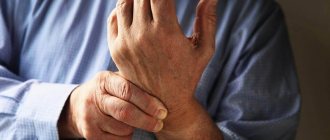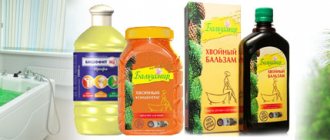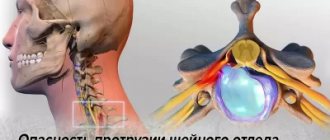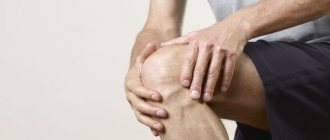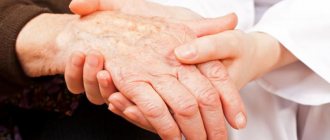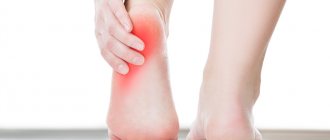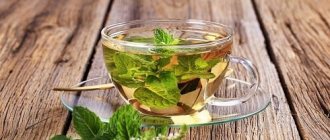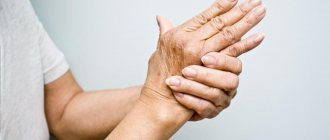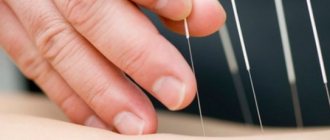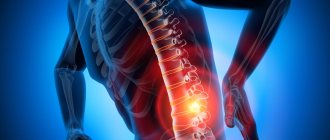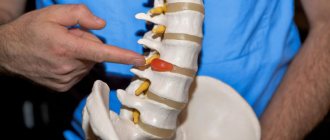Protrusion is a disease indicating pathological changes in the human musculoskeletal system. In fact, this is the initial stage of the development of a spinal hernia, in which displaced intervertebral discs compress the nerve roots of the spinal cord, thereby causing acute pain. Many patients try to treat protrusion on their own at home, using proven folk remedies. Such treatment can be quite effective, but only in combination with traditional medicine methods and in the absence of contraindications.
Due to the specificity of protrusion, which is accompanied by a complex set of changes in the musculoskeletal system, it follows that this disease is practically impossible to cure. Therefore, treatment of protrusion with folk remedies is aimed at stopping the further development of the disease, as well as relieving very unpleasant symptoms.
Why is protrusion dangerous?
Intervertebral discs consist of a nucleus pulposus and an outer part - a dense fibrous ring. Excessive physical activity, metabolic disorders and various diseases lead to deformation of these anatomical structures. The thickness and elasticity of the discs decreases.
Degenerative processes change the structure of the outer ring. Fibrous fibers are destroyed and cracks form. The nucleus pulposus loses moisture, becomes hard, and moves. A pathological protrusion of the disc into the spinal canal – protrusion – gradually forms.
The disease can be hidden. When the nerve roots are compressed, pain develops, complaints of numbness in various parts of the body and muscle weakness appear. Clinical manifestations of the disease depend on the location of the protrusion: in the cervical, thoracic or lumbar spine. In case of progression of the pathological process, the development of a hernia is possible - displacement of the core of the cartilaginous disc beyond the damaged fibrous ring.
The impact of protrusion on the human body
Before you begin treating protrusion using traditional medicine methods, you should carefully study the pathogenetic changes that protrusion of intervertebral discs causes in the body. The list of such changes includes:
- Impaired blood supply, which can be both the cause of protrusion and its consequence.
- Pain syndrome arising from irritation of the spinal cord roots.
- Inflammation of the soft tissues caused by the pressure of the disc on the bones and ligaments of the spinal column.
- Damage to cartilage tissue caused by insufficient supply of fluid and nutrients to the affected area.
- Numbness of the extremities caused by a bulging disc and pinched nerve roots.
Traditional methods of treating protrusion
The main condition for successful therapy is the use of therapeutic measures at an early stage of the disease. Modern treatment methods help eliminate compression of the nerve roots, reduce the intensity of pain and normalize metabolic processes in cartilage tissue.
| Pharmaceuticals | Used: • analgesics; • non-steroidal anti-inflammatory drugs; • muscle relaxants; • chondroprotectors; • biogenic stimulants; • complexes of vitamins and minerals. |
| Physiotherapy | UHF, laser therapy, electrophoresis with non-steroidal anti-inflammatory drugs and chondroprotectors, and mud therapy are widely used. |
| Exercise therapy and massage | A set of exercises is selected individually for each patient, taking into account the location and severity of the protrusion. Manual, hardware and vacuum massage are effective. |
Surgical treatment is rarely used, since damage to the annulus fibrosus during surgery often leads to relapse of the disease. The indication for the use of radical methods is serious disturbances of innervation due to compression of the nerve trunks and spinal cord.
What is protrusion
The spine consists of individual vertebrae. They are mobile thanks to its muscles and ligaments, as well as intervertebral discs - elastic formations that are located between the vertebrae along the entire length of the spine and act as a kind of shock absorbers under loads.
Each disk consists of:
- nucleus pulposus - located in the center of the disc;
- fibrous capsule - surrounds the nucleus pulposus on all sides.
This structure of the intervertebral disc is maintained due to active blood flow - and that, in turn, is maintained due to active movements. (Therefore, exercise therapy exercises for protrusion of the vertebrae of the sacrum and other parts are practiced not only for the purpose of treating this pathology, but also for its prevention - more on this later).
A sharp decrease in motor activity negatively affects the structure of the intervertebral disc - the composition of its tissue changes, the disc loses its former elasticity. In addition, when a person’s motor activity decreases, the muscles that normally support the spine weaken and lose their role as a corset for the spine, and the vertebrae begin to put pressure on each other. Under these circumstances, the core of the intervertebral disc:
- “squeezed out” from the intervertebral space;
- puts pressure on the neurovascular bundles.
Traditional recipes for the treatment of cervical protrusion
When the lesion is localized in this part of the spine, patients complain of pain, numbness of the hands, and tinnitus. Drops in blood pressure and dizziness are often observed. Compression of blood vessels can lead to bleeding in the brain.
Therapy for protrusion of the cervical vertebrae combines traditional methods and treatment with folk remedies. All medications are used only after a complete examination of the patient, with the consent of the attending physician.
Compresses
A well-known folk remedy for protrusions is garlic tincture. The product has an anti-inflammatory effect, improves blood circulation, stimulates metabolism in cartilage tissue. Garlic contains useful substances such as potassium, calcium, magnesium, manganese, iodine, zinc, and essential oils.
To prepare the tincture, you need to peel and grind 300 grams of fresh garlic using a blender or meat grinder. Pour 150 ml of vodka over the prepared pulp. Infuse the prepared medicine for ten days in a dark and cool place.
Usage: apply a thin layer of the mixture to the skin of the neck, place a waterproof material (plastic film) and a warm cloth on top. The procedure time is 30 minutes. It is recommended to make compresses every other day, alternating them with turpentine baths.
The product is contraindicated if you are allergic to garlic. Do not apply a compress to damaged skin. If there is a strong burning sensation, stop the procedure immediately.
Turpentine baths
Prepare a mixture of grated baby soap (10 grams), 1 liter of hot fresh water, 30 ml of 1% salicylic alcohol, 200 ml of turpentine. Mix the solution thoroughly. Pour warm water into the bath, add three tablespoons of the resulting mixture. The maximum duration of the procedure is ten minutes.
Turpentine baths help restore blood circulation in the affected area of the spinal column and have an analgesic and anti-inflammatory effect. The procedures are contraindicated in case of cardiovascular diseases, as they contribute to an increase in blood pressure.
Lilac tincture
It has an analgesic and anti-inflammatory effect, helps relax muscles, and eliminates swelling. Lilac flowers are rich in vitamins and essential oils. A lasting therapeutic effect is possible only after a long course of treatment (5-6 months).
To prepare the tincture, you need to pour 400 ml of vodka into a glass of dry raw materials and leave for two weeks in a cool, dark place. Rub the resulting drug into the skin of the neck before going to bed. Both white and regular lilac can be used in the process.
The plant is poisonous! Lilac flowers and leaves contain the glycoside syringin, the breakdown of which produces a highly toxic substance - hydrocyanic acid. Care must be taken when using the tincture.
Lower back problems? Traditional medicine to help
A large load on the spine when the human body is in an upright position leads to the gradual destruction of cartilaginous discs, which often ends in the formation of a protrusion. An alarming signal is back pain that intensifies with changes in position and physical activity.
Horseradish tincture
Drug treatment of spinal protrusions (if the lumbar region is affected) is recommended to be combined with the use of traditional medicine. A proven method is to use the tincture daily, which can be quickly prepared at home.
Preparation: Pour one hundred grams of chopped fresh horseradish root with a glass of vodka, leave for a week in a tightly closed container. Strain the finished tincture. Lubricate the affected area of the back and wrap it with a warm cloth. The procedure is best done before bedtime.
Honey compresses
The product normalizes metabolism, stimulates the body's defenses, relieves inflammation and promotes the elimination of toxins. For treatment, it is recommended to use meadow, buckwheat or forest honey. The recommended course of treatment is at least 15 procedures.
Recipes:
- Grind one raw potato using a blender or fine grater, add 2 tablespoons of warm liquid honey, mix thoroughly. Apply a thin layer to the skin of the lower back, cover with cling film and a warm cloth. Duration of exposure is 1-2 hours.
- Mix chopped black radish with the same amount of liquid honey, add 1 tablespoon of rock salt, 2 tablespoons of vodka. Apply the mixture to the affected area.
- Dry compress: mix honey with flour, knead into a stiff dough. Apply the resulting cake to the sore spot, cover with polyethylene, and secure with a warm scarf. For the best effect, it is recommended to do the procedure after a warm bath.
Kalanchoe compress
The plant is widely used in folk medicine and has an analgesic and anti-inflammatory effect. Brings relief even in advanced stages of the disease. It is recommended to combine procedures with turpentine and pine baths.
Cut fresh, healthy leaves of the plant into several parts and place them on a piece of gauze or clean cloth. Apply the prepared compress to the sore spot and secure with a warm cloth. The procedure must be done at night. The recommended course of treatment is 2 weeks.
Diagnosis and principles of treatment of protrusions
Conservative treatment of intervertebral protrusion is indicated in the absence of complications and direct threats to the functions of the spinal cord: conduction of nerve impulses, the formation of persistent myelopathy, paresis, paralysis. To clarify the size, structure and localization of neoplasms, complex differential diagnostics is used.
- Radiography quite clearly visualizes the condition and position of the hard tissues of the spine.
- If hernia formation is suspected, MRI or CT is used. They determine the narrowing of the spinal canal, the area of protrusion of the nucleus pulposus, its appearance and size.
- Additionally, contrast myelography, examination of blood vessels, heart, and abdominal organs are prescribed.
- A complete picture of the development of the disease and existing concomitant disorders is formed after consultation with a gastroenterologist, pulmonologist, cardiologist, and neurologist.
The main goals of non-surgical treatment of intervertebral protrusion:
- elimination of symptoms;
- maintaining or returning mobility of the affected segment;
- stabilization of physical condition: prevention of ruptures of the fibrous ring, the formation of hernias, slowing down further growth of the tumor.
Before agreeing on a treatment regimen, the doctor determines the nature and frequency of pain, assesses muscle tone, the integrity of reflexes, and the presence and manifestation of neurological disorders.
Uncomplicated conditions of protrusion and prolapse usually do not require drug correction, since they do not manifest themselves clinically. In these cases, taking preventive measures is sufficient.
Recipes for relieving pain from protrusions
For problems with the spine, herbalists advise undergoing a course of treatment, which includes wraps and herbal decoctions. The complex has a beneficial effect on the nervous system, relieves inflammation, and normalizes metabolism. It takes time to achieve a therapeutic effect, so you need to be treated for at least 2 weeks.
Collection for wrapping:
- 100 grams of sage leaves;
- 50 grams of horsetail grass;
- 50 grams of mint;
- 50 grams of chamomile flowers.
To prepare the medicine, you need to pour 4 tablespoons of the raw material with hot water to make a paste. After the herbs have steamed, spread the mixture in an even layer on a clean cloth. Apply a compress to the sore spot and secure. The duration of the procedure is 1 hour.
Collection for oral administration: mix nettle herb and horsetail in equal proportions. Brew a tablespoon of dry raw materials with 200 ml of boiled hot water. After cooling, strain. Drink twice a day. In order for the medicine to be effective, it is necessary to prepare a fresh infusion daily.
Pine baths
They affect various parts of the spine and internal systems, improve blood circulation, normalize the transport of nutrients to muscles, bones and nerve endings. For the bath you need pine extract, which you can buy at the pharmacy or prepare yourself.
Recipe: boil chopped pine branches along with pine needles for half an hour, leave in a dark place for 5 days. You should get a brownish liquid mass. To prepare a bath you need 0.5 kg of medicinal raw materials.
Symptoms
General symptoms
- Insomnia - secondary to pain
- Weight loss is secondary to chronic pain and loss of appetite. Loss of appetite is observed in patients suffering from back pain caused by spinal stenosis or cancer.
Backache
- Discogenic pain. Lumbar discogenic pain is felt in the area of the lumbar dermatome L1-L5.
Lumbar radicular pain
- The nature of the pain is sharp and shooting pain.
- Pain is triggered by certain movements (for example, bending or twisting the body, coughing and sneezing).
- Time and intensity of pain - pain is more intense at night
- Pain radiates to the lower extremity - along the dermatome of the L1, L2, L3, L4, L5 or S1 nerve roots.
- Dermatomal pain caused by root compression
Compression of the L1 root - pain spreads to the inguinal dermatome.
L2 root compression - Pain is felt along the anterior and lateral surface of the mid-thigh, mid-thigh and lateral thigh.
Compression of the L3 root - Pain is felt along the inner and anterior lower part of the thigh.
Compression of the L4 root P- Pain is localized in the lower leg, mainly on the anterior and posterior sides.
L5 P Compression - Pain is felt on the front side of the lower leg and the dorsal part of the foot in the area of the middle three toes.
S1 root compression - Pain is felt on the lateral side of the feet.
Compression S2 - Pain is felt on the back of the thigh and the back of the upper 2/3 of the calf.
Tingling sensation spreads along the dermatome of the L1-S2 nerve roots
Numbness spreads along the dermatome of the L1-S2 nerves
Contraindications for the use of folk remedies for protrusion
Each organism is unique, so in some cases, herbal treatment can lead to a worsening of the patient's condition. Before using traditional medicine recipes, you must consult your doctor. Taking good care of your health will help prevent dangerous complications.
The use of folk remedies is prohibited in the following cases:
- weakened adaptation to environmental changes;
- there are numerous chronic diseases, which reduces the body’s compensatory capabilities;
- there is a tendency to allergies.
